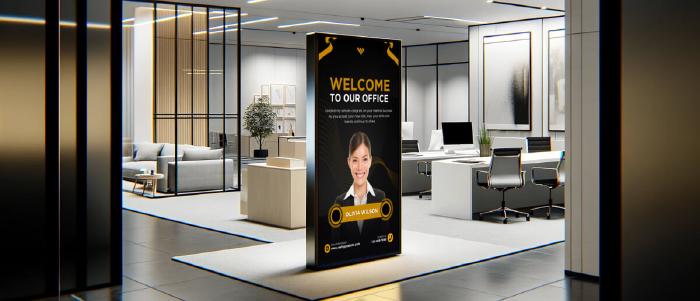
Nov 24 2023
5 min read

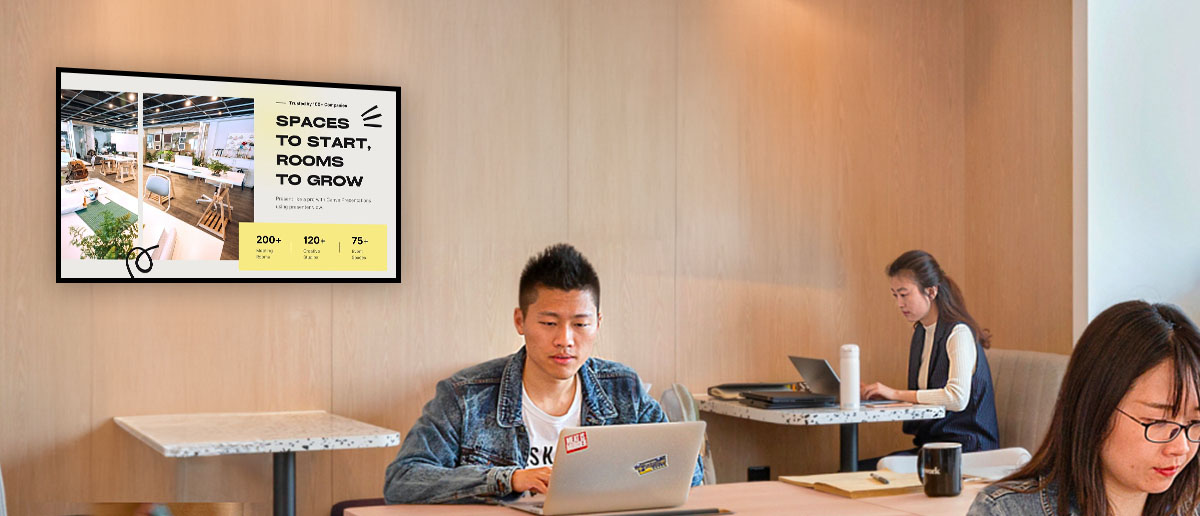
Dec
Office hoteling is changing the way we use workspaces today. It is becoming popular, especially with more people working flexibly. But managing this system can be tricky, and that is where digital signage comes in. A smart solution that makes office hoteling smoother for everyone!
In office hoteling, the key is to use office space efficiently. Employees can choose where they work based on what they need that day. This flexibility is great, but it also means that tracking available spaces and communicating with staff can be challenging.
These problems can be effectively tackled using digital signage for office hoteling. Let us dive into how combining office hoteling with digital signage can be a game-changer for modern workplaces.
Office hoteling is a flexible way of using office space. Instead of having a permanent desk, employees book a workspace when they need it.
The idea behind office hoteling is simple: make better use of office space. In traditional offices, many desks stay empty for parts of the day or week because people are out of the office, working from home, or in meetings.
Office hoteling lets businesses reduce wasted space by only providing desks for those who are actually in the office.
There are several benefits to this system. First, it can save companies money by reducing the amount of office space they need. Second, it gives employees more freedom to choose where and how they work. Some people might prefer a quiet corner one day and a bustling area the next, depending on their tasks.
While office hoteling offers flexibility and efficiency, it’s not without its challenges.
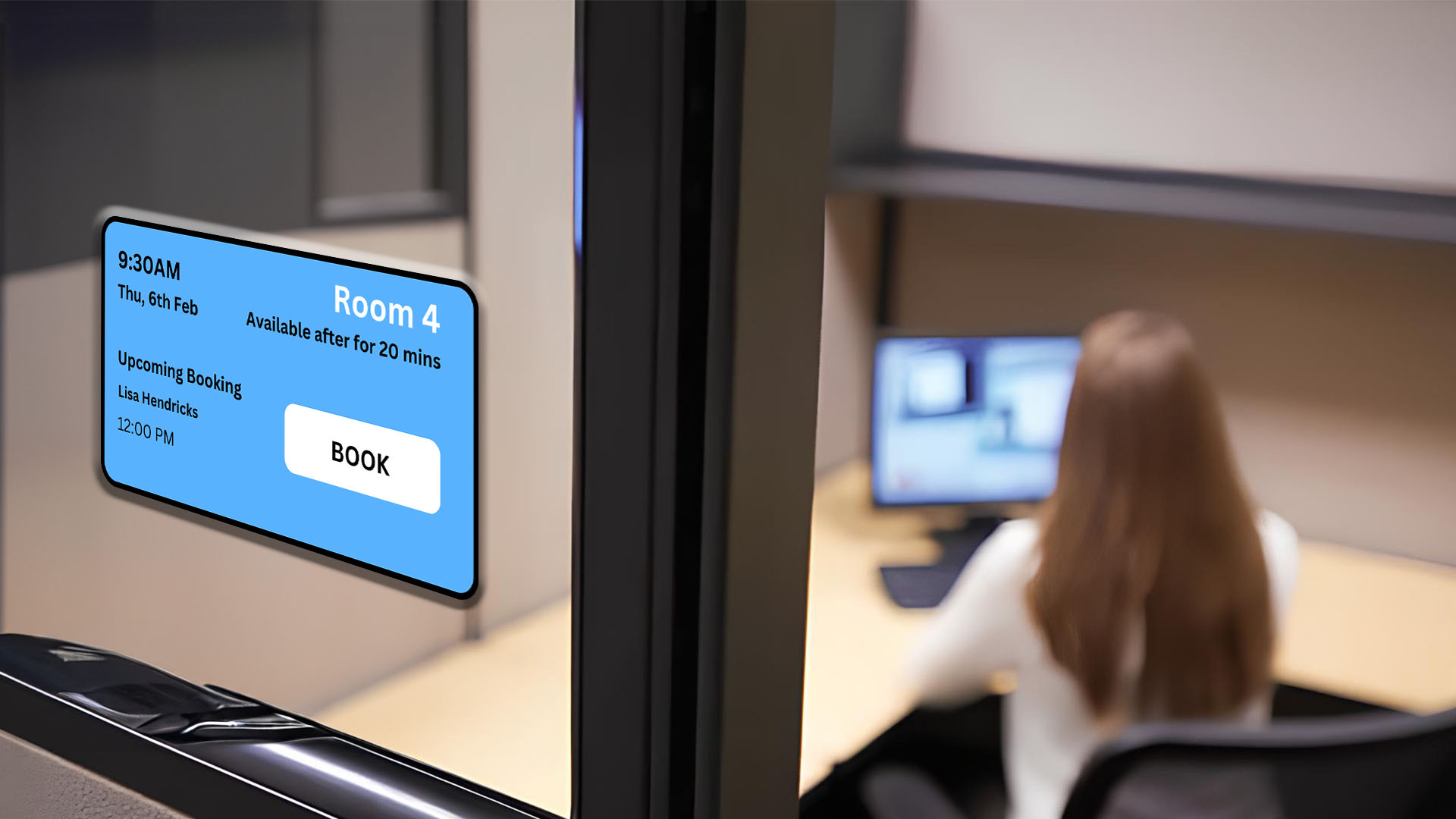
With employees coming in at different times and needing various types of workspaces, it can be hard to keep track of what is free and what is not.
This can lead to confusion and a scramble for space, which isn’t good for productivity.
Another challenge is getting employees used to this new way of working.
People are creatures of habit, and moving from a permanent desk to a flexible seating arrangement can be a big change.
Some might struggle to find their preferred spot or miss the personal touch of a dedicated workspace.
Office hoteling also means managing resources like meeting rooms, projectors, or even parking spaces.
Without a clear system, booking and using these resources can become a chaotic process.
Effective communication is crucial in an office hoteling setup.
Employees need to know where they can work, how to book a space, and where to find the resources they need. Poor communication can lead to frustration and wasted time.
Finally, integrating the right technology to support office hoteling is a challenge. The technology needs to be user-friendly and reliable. If it’s too complicated or doesn’t work well, it can make the whole system fall apart.
Digital signage is a powerful tool that can help overcome many of the challenges of office hoteling. It uses screens to display information and can be updated quickly and easily.
Here’s how digital signage can make office hoteling work better:
Digital signage can show real-time information about which desks and meeting rooms are available. This makes it easy for employees to find a place to work without wandering around the office.
Screens can display floor plans, occupied and available spaces, and even the time for which a space is booked
For employees new to office hoteling, digital signage can be a guiding hand
It can provide instructions on how to book a space and where to find different office zones. This helps reduce the uncertainty and discomfort that can come with change.
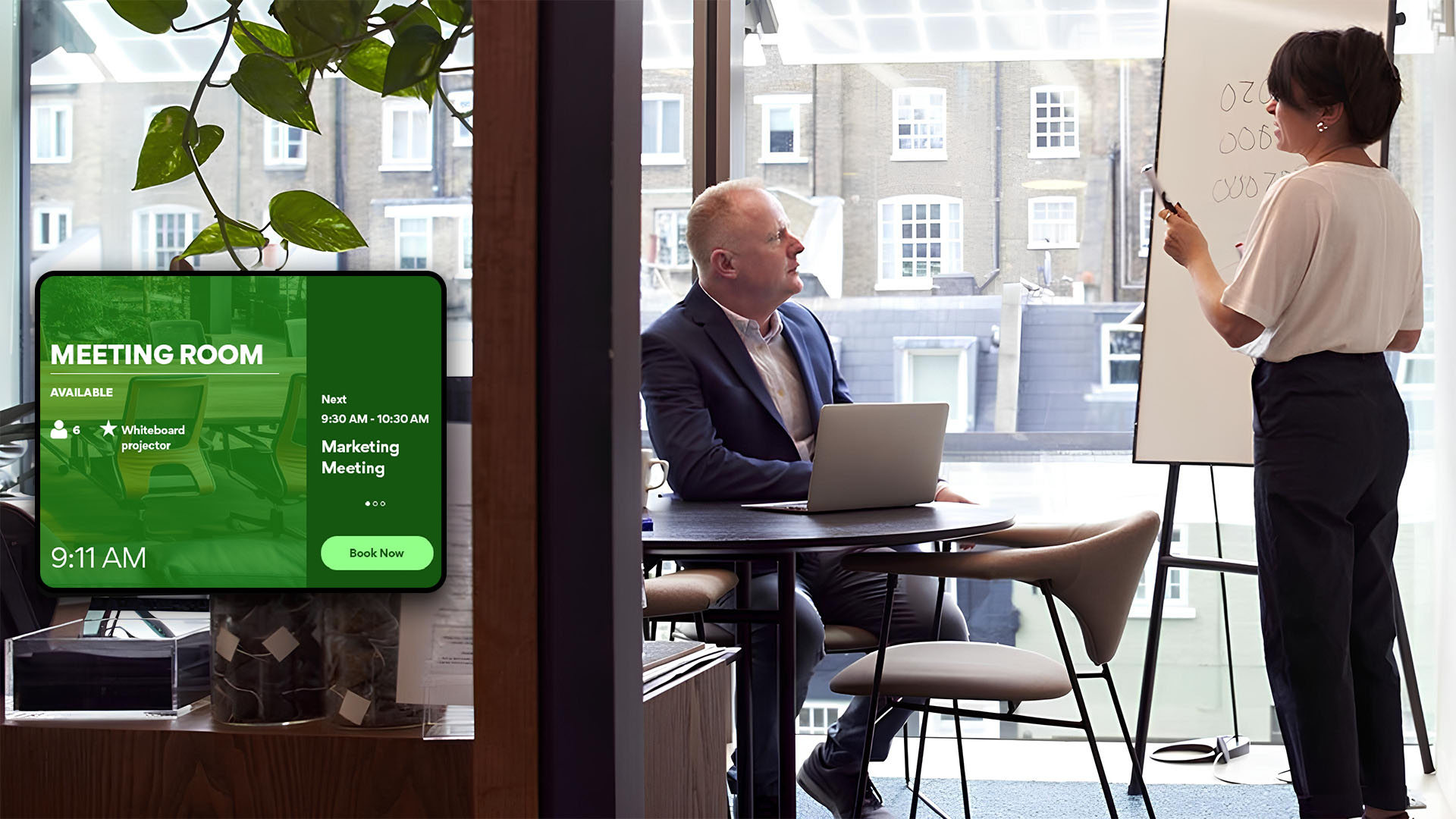
Modern digital signage is designed to be user-friendly. Employees can interact with it through touch screens or mobile apps.
This ease of use encourages everyone to engage with the system and makes office hoteling more efficient.
Integrating digital signage with office hoteling enhances space efficiency and workplace appeal by displaying real-time workspace availability. This visibility promotes active engagement and communication from members and visitors, highlighting the office’s flexibility and modernity.
Digital signage in office hoteling boosts employee networking by promoting information sharing and interaction, breaking down silos. Screens displaying member profiles, skills, and projects personalize the workspace and encourage collaboration. Transform your workspace into a dynamic networking hub, enhancing professional relationships and community spirit among members.
Digital signage significantly boosts employee morale by creating a more engaging and personalized workspace. For instance, featuring employee achievements, birthdays, and company milestones on digital displays fosters a sense of belonging and recognition among staff. This acknowledgment can elevate morale, making employees feel valued and connected to their workplace.
To effectively manage peak demand days, digital signage can be strategically utilized to guide space allocation and usage. Special alerts or messages can also be programmed to inform staff about high-demand periods, offering alternative solutions like remote work options or highlighting collaboration spaces. This ensures a smooth operation even on the busiest days, maintaining a productive and orderly environment.
Digital signage plays a crucial role in enhancing communication and efficiency in an office hoteling setup. By providing clear, real-time information, it helps streamline the process and makes the workplace more user-friendly.
Here’s how digital signage contributes to a better office hoteling experience:

It is a quick and effective way to communicate with everyone, reducing the need for constant emails or meetings.
Integrating digital signage with room booking systems simplifies the process of reserving workspaces.
Employees can see which spaces are available and book them directly through the signage system. This reduces confusion and saves time, making the office run more smoothly.
Digital signage can show live updates of workspace availability. This feature is particularly useful in busy offices where space is at a premium.
Employees can quickly find and secure a spot, minimizing downtime and frustration.
Large offices or complex layouts can be navigated easily with digital signage.
Interactive maps on the screens can guide employees to their booked spaces, meeting rooms, or amenities like printers and coffee machines. This not only saves time but also enhances the overall office experience.
Check it out: Why Digital Wayfinding Is The Next-Gen Way Of Navigation
Implementing digital signage in a small office can significantly enhance communication and workspace ambiance. Here are four key steps to effectively set up digital signage in a compact environment:
Identify what you want to achieve with digital signage—be it showcasing company news, recognizing employee achievements, or guiding visitors. Understanding your objectives guides the content and technology selection.
For small offices, opt for compact, cost-effective digital displays that fit your space. Consider screens that can be easily mounted in common areas or near workstations without overwhelming the space.
Pick digital signage software that’s easy to use and supports your content needs. Look for platforms offering templates and drag-and-drop features for hassle-free content creation and scheduling.
Develop a content strategy that engages employees and visitors. Mix dynamic content like news feeds, weather, and social media updates with static information such as company policies and employee milestones. Regular updates keep the content fresh and relevant.
Staying ahead of these trends is key for businesses looking to maintain a modern, efficient workplace. Here’s what we can expect in the world of office hoteling and digital signage:
Future digital signage will likely integrate more advanced technologies like artificial intelligence (AI) and the Internet of Things (IoT).
This could mean smarter space management, with AI algorithms predicting and optimizing space usage based on real-time data.
The focus will increasingly be on creating a seamless and intuitive user experience.
This might involve more personalized interactions with digital signage, where the system recognizes individual employees and tailors information to their preferences and schedules.
As remote and hybrid work models continue to grow, digital signage might extend beyond the physical office.
Mobile apps could provide remote access to office hoteling systems, allowing employees to book spaces and access office information from anywhere.
With the accumulation of data from digital signage usage, businesses will have more insights into how their office space is used.
This data can drive more informed decisions about office design, resource allocation, and employee well-being.
The real insight here lies in understanding that office hoteling, supported by digital signage, is not merely about space optimization or technological integration. It’s about fostering a culture of flexibility, efficiency, and engagement.
In a world where the lines between physical and digital spaces are increasingly blurred, the ability to seamlessly navigate this hybrid landscape is crucial.
Digital signage in office hoteling is a step towards building an environment that resonates with the modern workforce’s expectations - an environment that is dynamic, informative, and intuitively aligned with their needs.
Take complete control of what you show on your digital signage & how you show it.
Start Free Trial Schedule My Demo
Nov 24 2023
5 min read
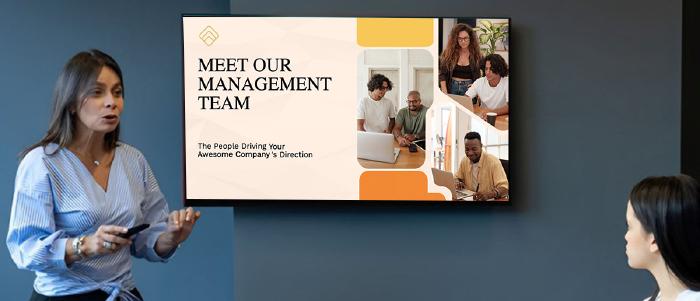
Nov 17 2023
7 min read
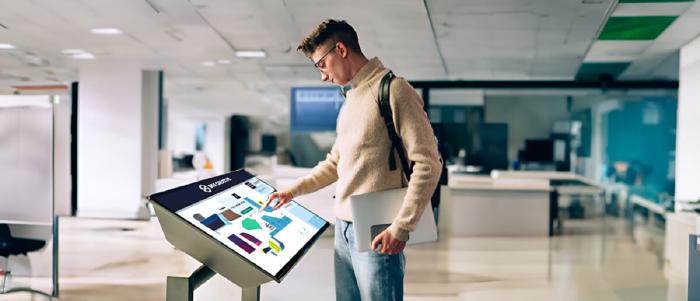
Sep 12 2023
8 min read

Jun 28 2023
7 min read